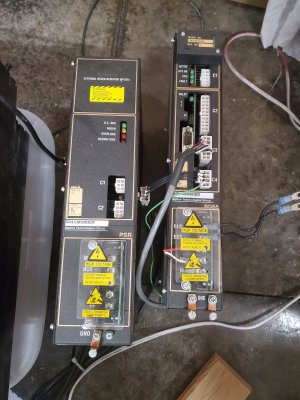- Joined
- Jan 7, 2016
- Messages
- 3,379
I thought about posting this on CNCZone but since I love you guys over here so much I thought I would try HM first.
I have a number of Parker TQ10 motor servo drives. Bought them on an auction and slowly selling them off in order to buy shoes for the kids.
I have a Precision Matthews 833T mill that I would really like to convert to CNC at some point. I know very little about CNC other than somewhat rudimentary concepts. I know the difference between servos and steppers for example and am somewhat familiar with the software side of it.
My question is this. Do I continue to sell these or should I keep 3 or 4 of them for myself. I also have Kollmorgen PSR and Kollmorgen BDS5 sitting here. Not sure if they would help my cause or not.
I have a number of Parker TQ10 motor servo drives. Bought them on an auction and slowly selling them off in order to buy shoes for the kids.
I have a Precision Matthews 833T mill that I would really like to convert to CNC at some point. I know very little about CNC other than somewhat rudimentary concepts. I know the difference between servos and steppers for example and am somewhat familiar with the software side of it.
My question is this. Do I continue to sell these or should I keep 3 or 4 of them for myself. I also have Kollmorgen PSR and Kollmorgen BDS5 sitting here. Not sure if they would help my cause or not.

